A Visit to the André Archive in Offenbach
Thursday, September 12, 2024

You may have already seen that this year marks the 250th anniversary of the founding of Johann André’s publishing house, which started in Offenbach in 1774. Though no longer publishing, the venerable business still exists and its historical archive has remained in the André family’s hands this whole time. In fact, today’s Musikhaus André is a bricks-and-mortar music store on Offenbach’s main shopping street and deals in music, accessories, instruments, and rentals, as it has since the 19th century. It is led by Hans-Jörg André, a member of the seventh generation of Andrés.
Being a part of the family business, the historical archive has limited accessibility to researchers and is not open to the public, but there is a database available online and the André family responds to research inquiries. Furthermore, the archive’s valuable holdings have been included in RISM since our earliest cataloging projects and we have made an effort to ensure that the André printed editions are dated up to plate number 1400.
Given the anniversary year, and since Offenbach is just right across the river from our office in Frankfurt, we took a field trip to the archive this summer. Kristina Krämer and Martin Bierwisch assisted in our visit: they are both former RISM staff members and they have been involved with the André archive thanks to ties with Dr. Axel Beer, emeritus professor of the University of Mainz.
The André music store moved to its current location in 1923, taking along its business papers and records—today’s historical archive. Printing and publishing operations of André ceased in the 1920s and 1930s. The archive escaped damage during World War II, though the printing shop (which was in a separate location) was completely destroyed.
The archive includes at least one copy of most of the printed editions, many music manuscripts (including autograph manuscripts), production and financial records, and correspondence. Join us as we take you on a virtual tour through the André archive.
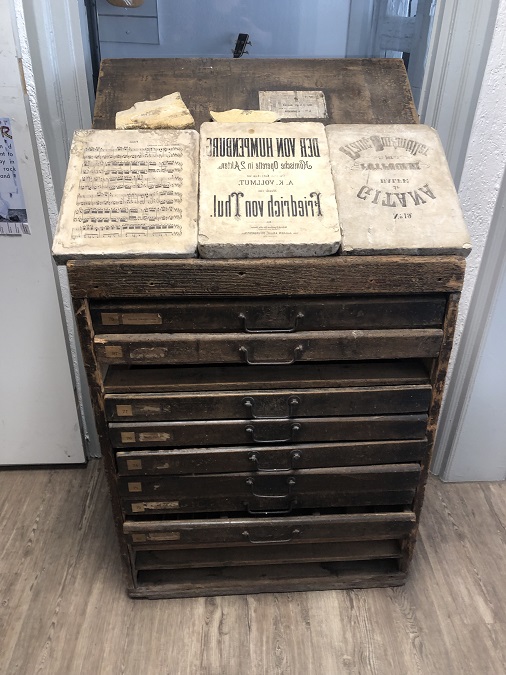
Lithography stones on display as you enter the André music store.
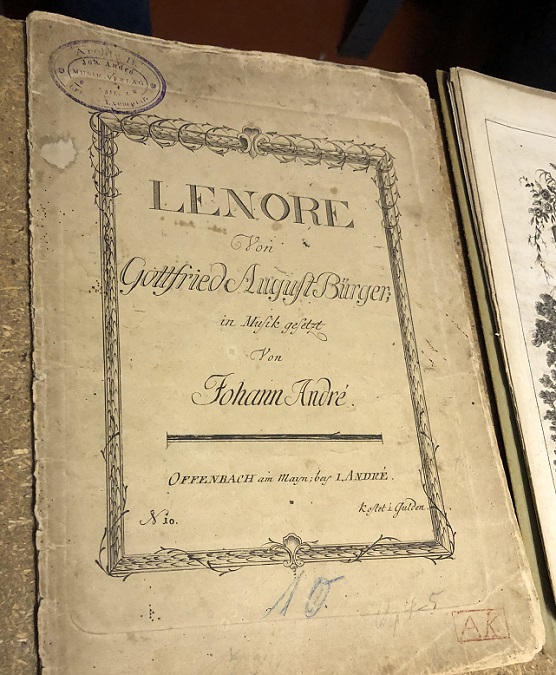
Johann André, Lenore, ca. 1775.
Lenore, being plate number 10, is one of the earliest printed editions in the archive, by—who else? the founder Johann André. RISM ID no. 990001064 (RISM Catalog | RISM Online).
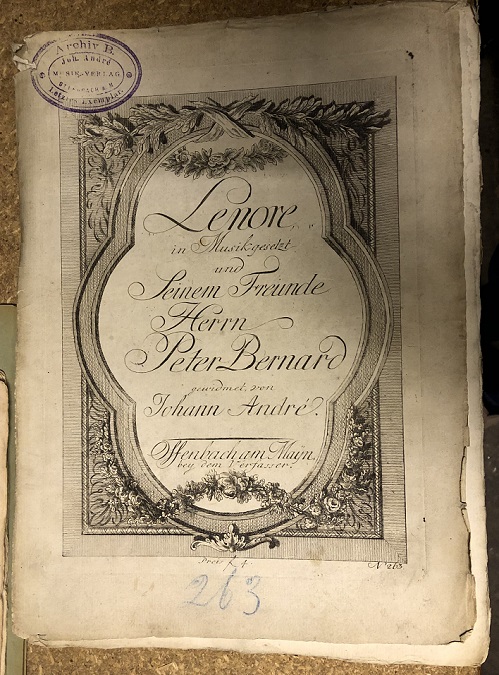
Johann André, Lenore, ca. 1789.
Lenore went through several editions. Here it is as plate number 263. RISM ID no. 990001066 (RISM Catalog | RISM Online).
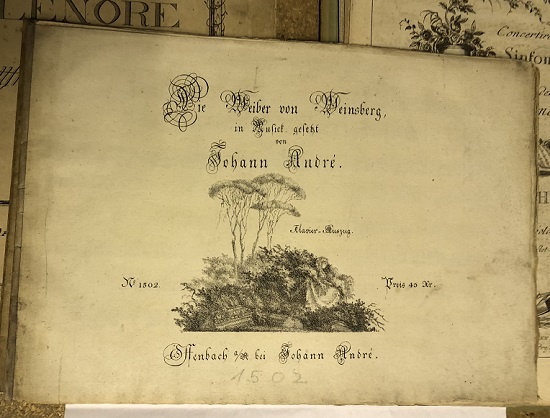
Johann André, Die Weiber von Weinsberg, ca. 1800.
Plate number 1502 holds the distinction of being the firm’s first lithographed music publication, an honor André reserved, once again, for his own music.
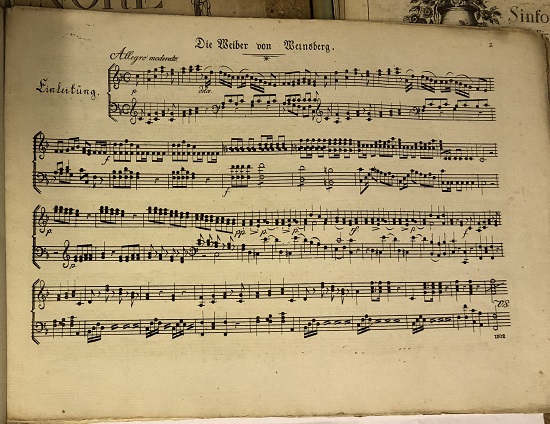
The first page of music. Not bad for its first try with the new technique.
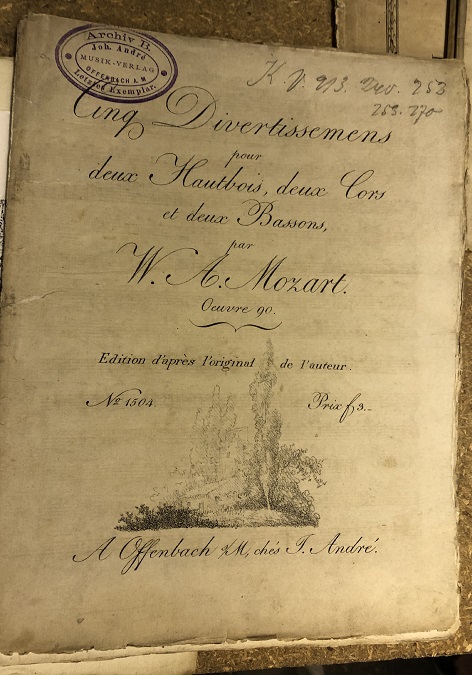
Wolfgang Amadeus Mozart, Cinq Divertissemens, ca. 1802.
Soon after this followed plate number 1504, André’s first lithographed edition by Mozart. RISM ID no. 990044421 (RISM Catalog | RISM Online).
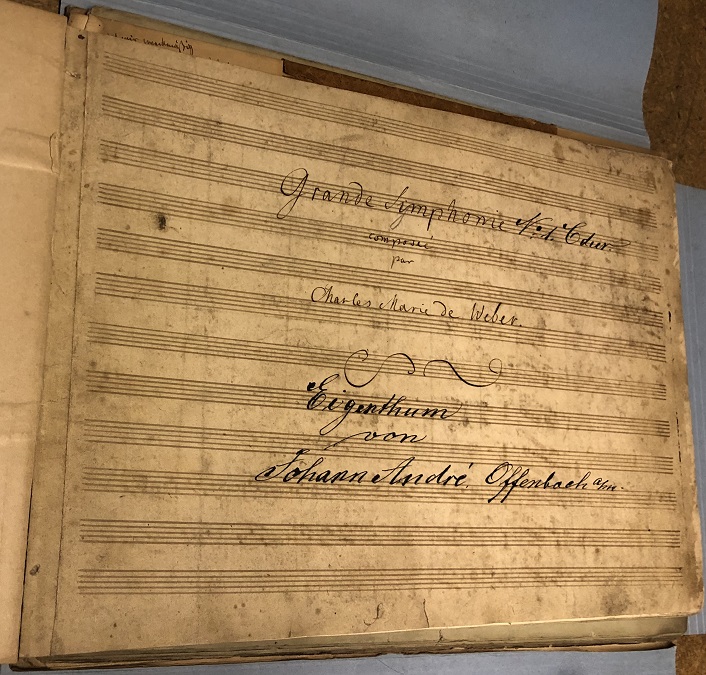
Carl Maria von Weber, Grande Symphonie No. 1 C dur.
The archive preserves numerous manuscripts, including this autograph manuscript by Carl Maria von Weber, which was used to create the printed version (Stichvorlage).
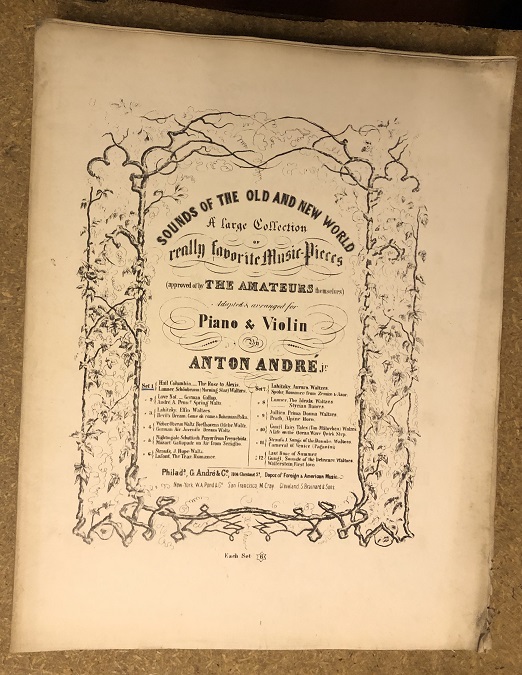
Anton André, Jr., Sounds of the Old and New World, ca. 1855.
One of André’s publishing arms stretched as far as Philadelphia.
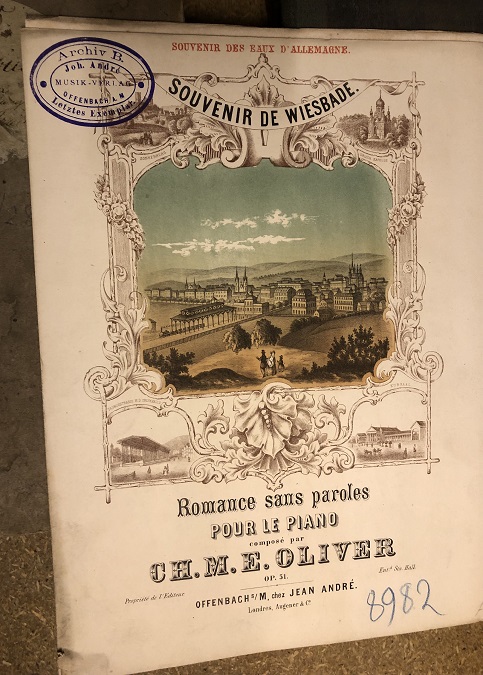
Charlotte M. E. Oliver, Souvenir de Wiesbade, 1864.
André published more works by Oliver than by any other woman composer.
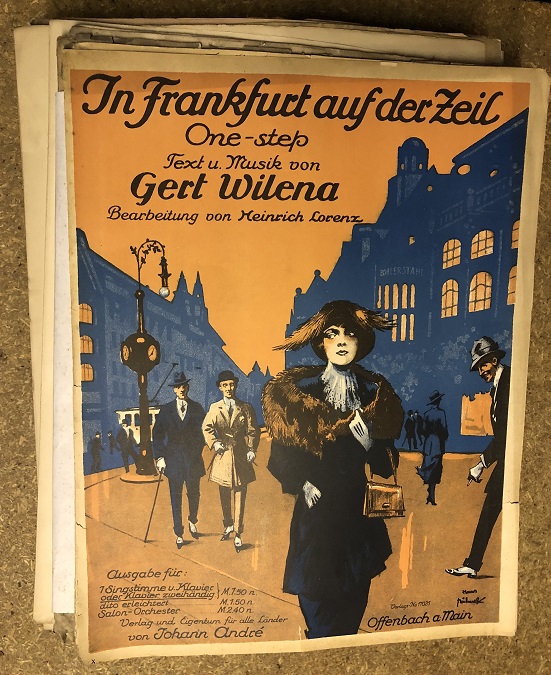
Grete Wilens, In Frankfurt auf der Zeil. Onestep, 1921.
Thanks to the André archive, we know that this dance by one “Gert Wilena” is actually by Grete Wilens.
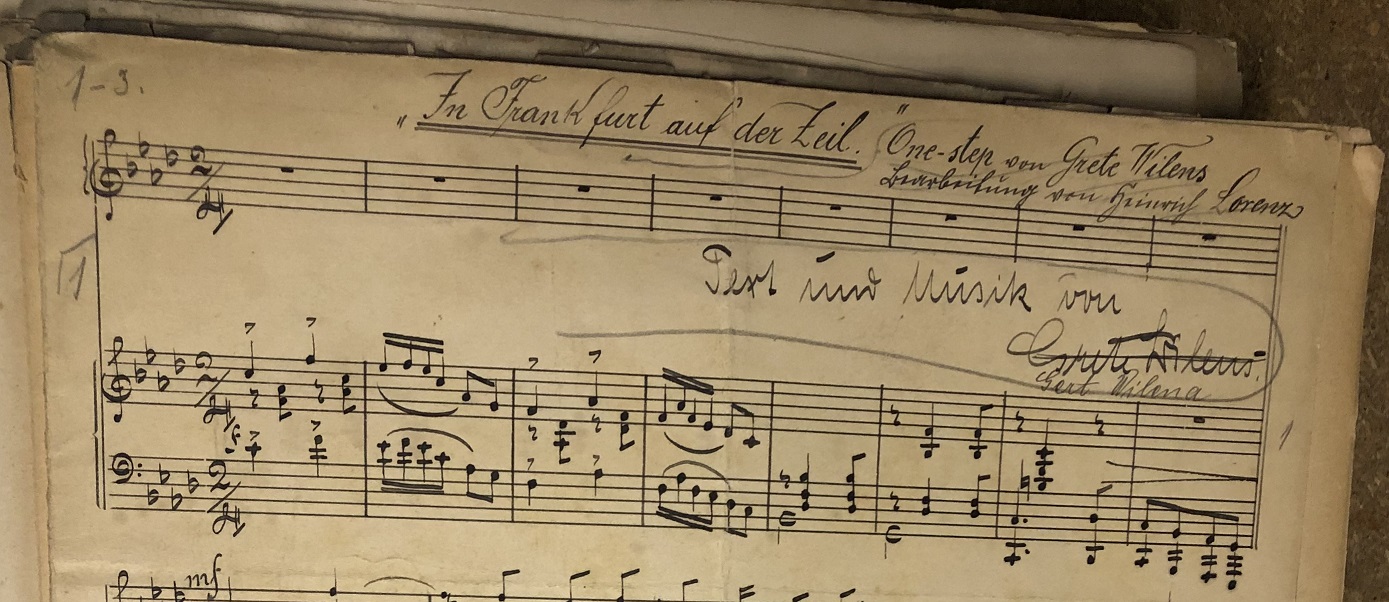
Through a handwritten note on the first page of the manuscript, we see that her name was crossed out and replaced by a male pseudonym.
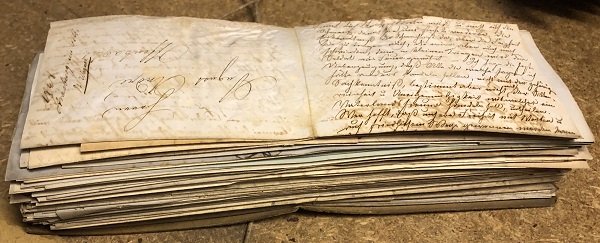
Much correspondence still remains bundled, largely untouched since the time it was filed away so many years ago. Some letters by the firm’s more famous correspondents have been sought out, such as correspondence from Ludwig von Köchel asking for information about André’s Mozart editions.
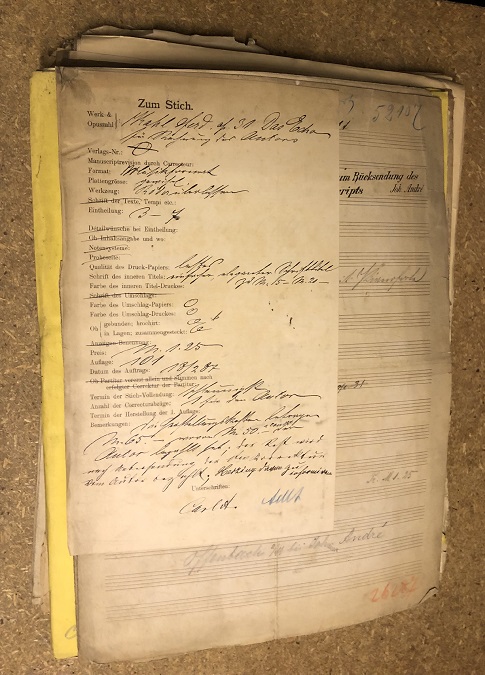
For editions from around the second half of the 19th century, technical details related to the printing process were written down on a piece of paper and filed away with the material.
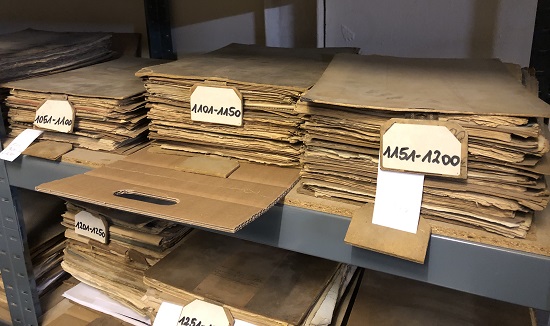
The printed editions are arranged in plate number order on shelves.
We could go on and on about everything we saw and its significance for both regional and international music history. Every document in the André archive tells a little about the history of the firm and the history of music printing and publishing. These stories will be left for future scholars to tell.
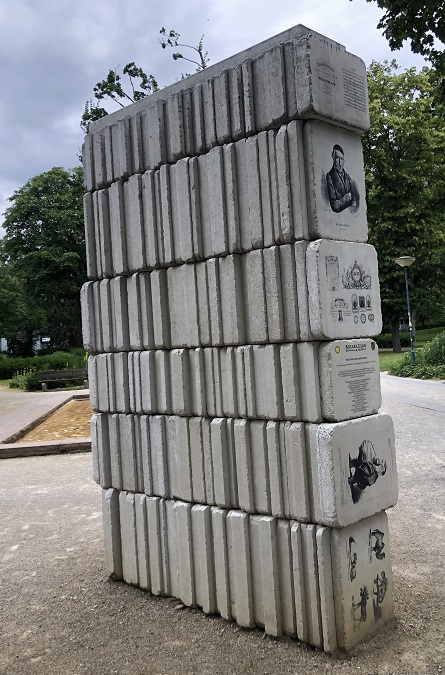
Alois Senefelder Monument by Kai Linke.
A sculpture in an Offenbach park built from André lithography stones, uncovered during construction work in 1984.
We left our visit with a renewed sense of the importance of the archive and appreciation for how a family business could shape music history. We would like to thank Kristina and Martin for guiding us through the archive (and for their help in preparing this summary), and especially Hans-Jörg André for granting us this special behind-the-scenes look.
All photographs © RISM Editorial Center, published here with permission of Musikhaus André.
Share Tweet EmailCatégorie: Evénements

